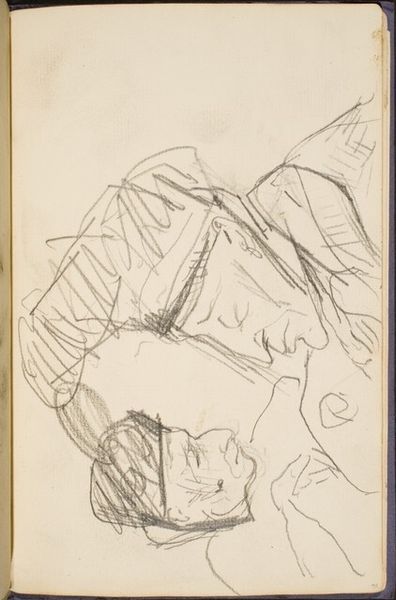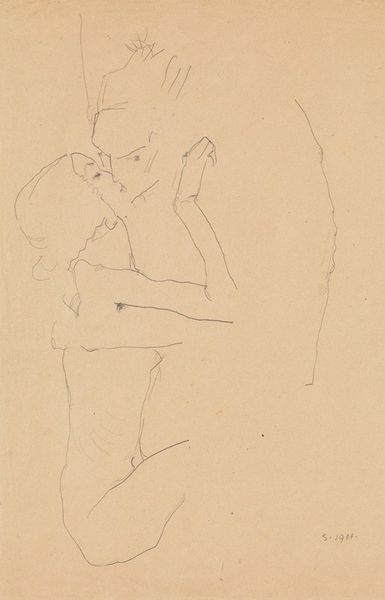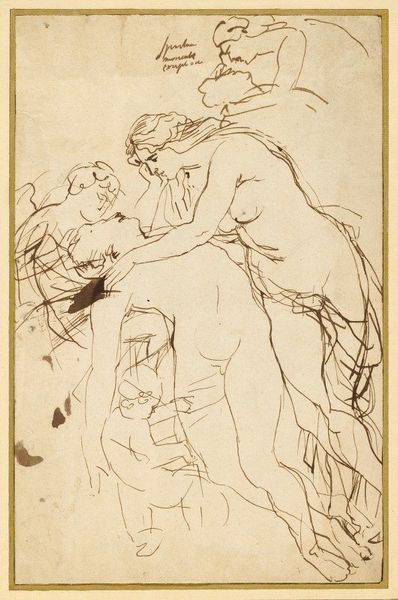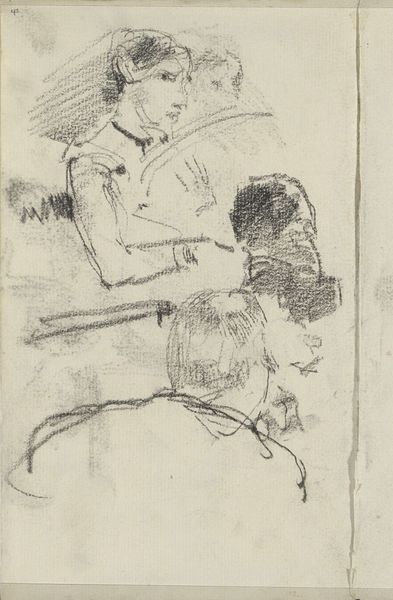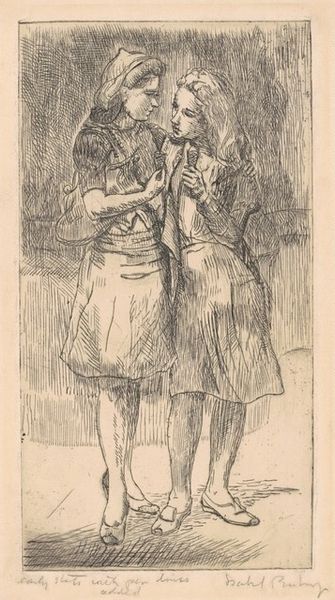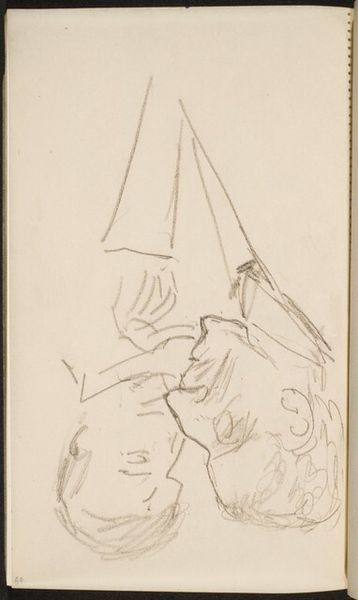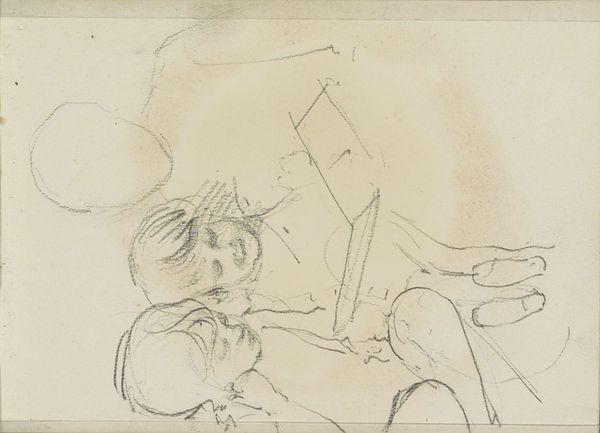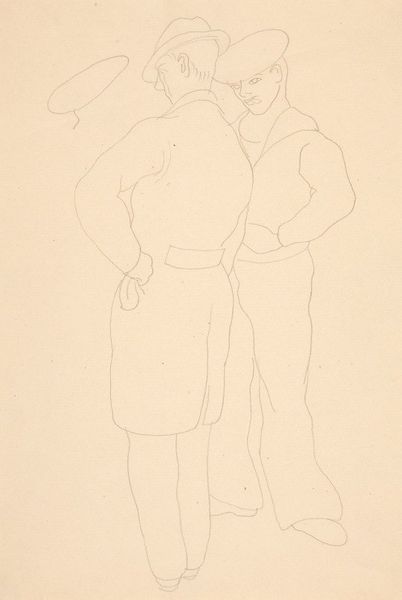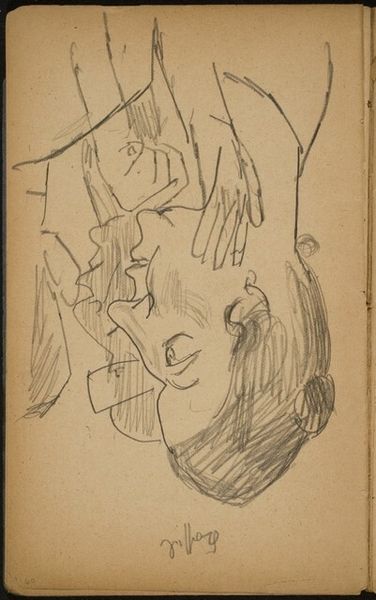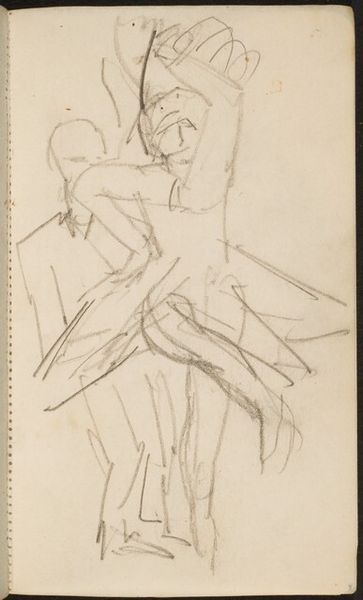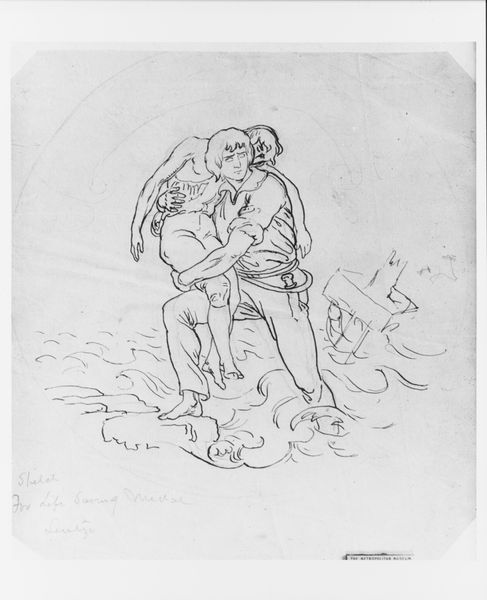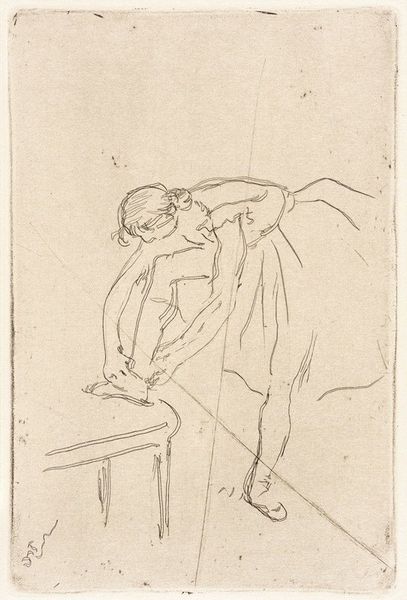
drawing, pencil
#
portrait
#
drawing
#
impressionism
#
figuration
#
pencil
Copyright: Public Domain: Artvee
Curator: Up next, we have an entrancing pencil drawing titled “La danse à Bougival.” The artist, Pierre-Auguste Renoir, known for his figural compositions and master of the Impressionist style, presents us with a sketch of a dancing couple. Editor: There’s a lightness to it, an ephemeral quality, despite being just pencil on paper. The couple almost seems to float. You can practically hear the music playing. The line work is loose and very active in suggesting movement. Curator: Exactly! The active line in drawing, almost frenetic, emphasizes a deliberate casualness. Note Renoir's use of implied lines to communicate movement. While much of the formal structure in dress is clearly detailed, the face is less distinct, but quite emotionally communicative. Editor: It's a powerful, seemingly unplanned composition. Even the negative space contributes to the overall effect, as if the couple exists in a shared moment disconnected from their surroundings. Tell me more about this public role, Bougival, what do you imagine that meant at the time? Curator: Bougival was indeed a significant location at the time, during the belle-epoque, with diverse entertainment in cabarets and public celebrations, creating a place for social interaction among a mix of people across classes. Renoir, along with other Impressionists, portrayed public gathering sites like this as modern subjects in art. His involvement reflects this changing social landscape. Editor: And Renoir chose a style and medium that reflects this interest: a quickly and skillfully executed drawing. Do you consider its unfinished nature to be significant in engaging with that emerging and more democratic viewership? Curator: One could definitely argue that the unfinished, spontaneous feeling does reflect Impressionism's rejection of academic polish. It emphasizes immediate perception and the transient nature of experience rather than idealized representation. Renoir’s compositional choices engage the shifting society to reveal art’s expanded ability to represent and explore everyday encounters. Editor: Seeing this sketch has encouraged me to reassess the function of what "finished" artwork really suggests in portraying history. Thank you. Curator: My pleasure; I now can’t help but revisit our accepted constructs of art!
Comments
No comments
Be the first to comment and join the conversation on the ultimate creative platform.


